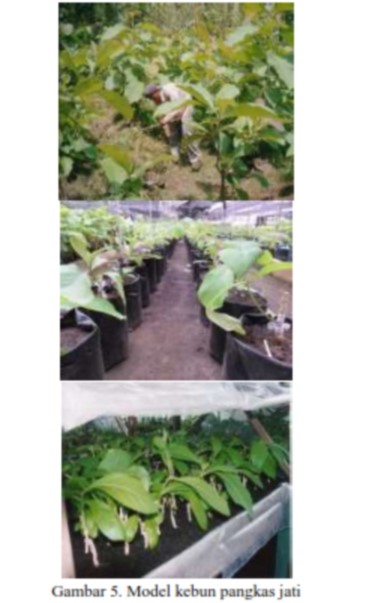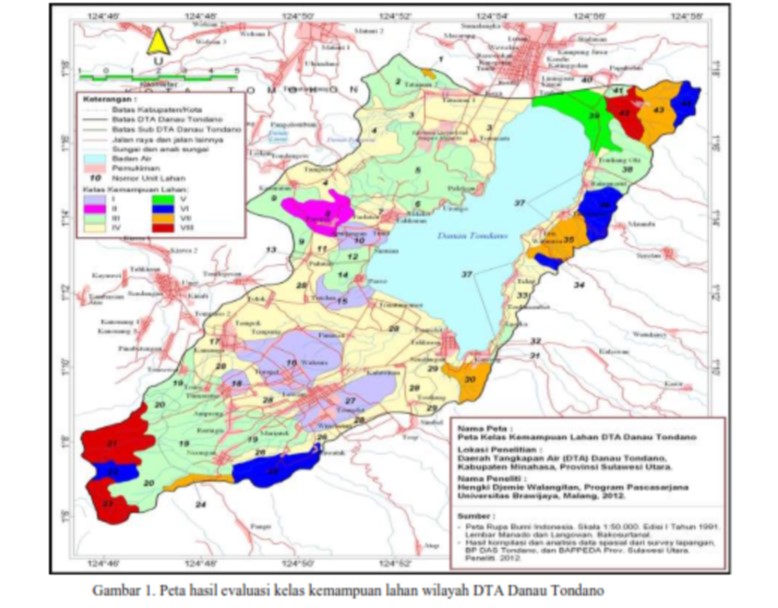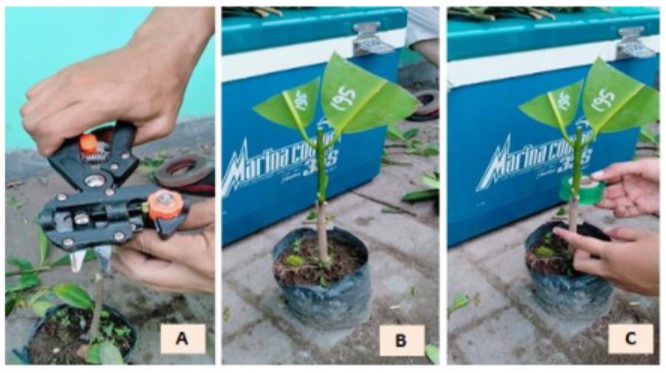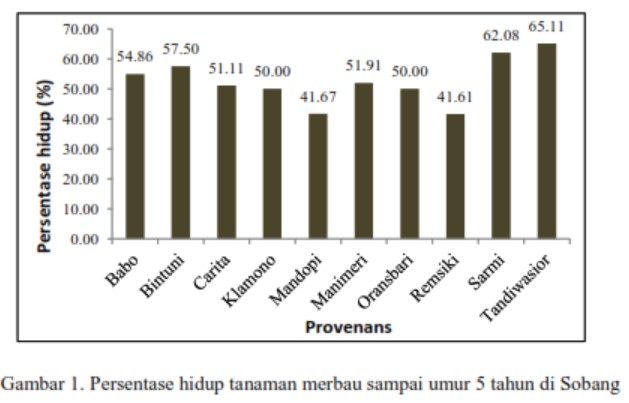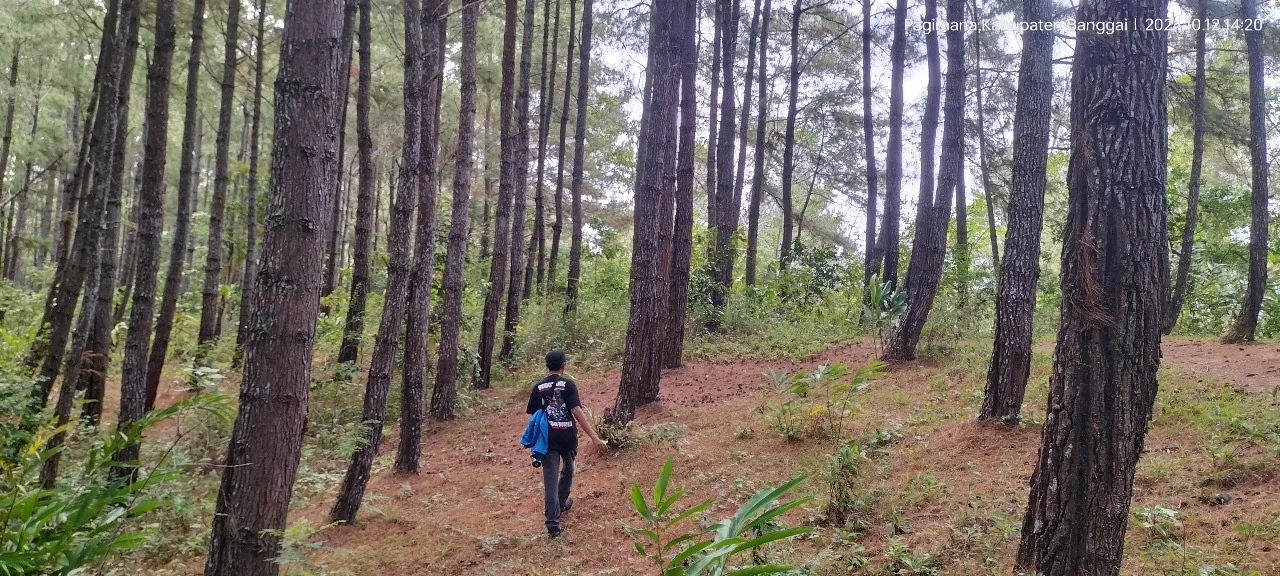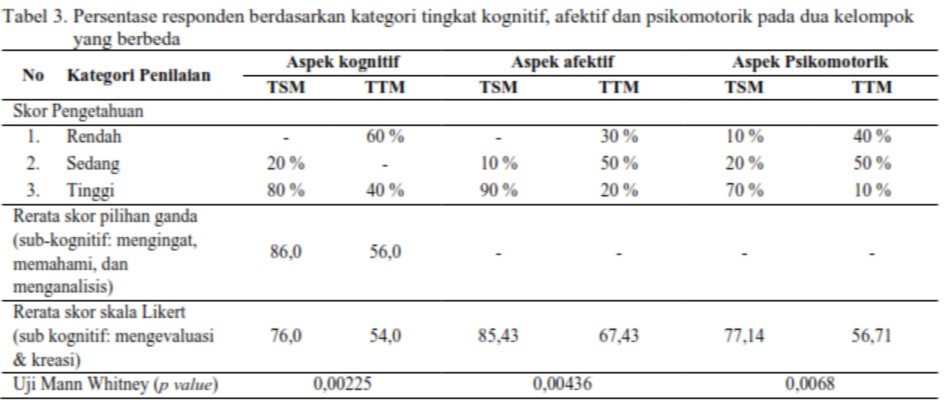Pengembangan Teknik Perbanyakan Vegetatif Tanaman Jati Pada Hutan Rakyat
Abstract
Jati (Tectona grandis) merupakan salah satu jenis tanaman penghasil kayu pertukangan yang penting dan populer di
Indonesia. Kebutuhan kayu jati terus meningkat namun belum dapat dipenuhi dari produksi kayu dari hutan tanaman
industri. Alternatif pemenuhan kebutuhan kayu tersebut diperoleh dari hutan rakyat. Dalam rangka peningkatan
produktivitas hasil hutan rakyat maka IPTEK penyediaan bibit unggul sangat diperlukan. Penyediaan bibit unggul
yang diperoleh dari benih unggul memerlukan waktu untuk melakukan seleksi pada plot uji keturunan, sehingga
pengembangan teknik perbanyakan vegetatif yang tepat adalah solusi yang bisa diterapkan. Strategi yang diperlukan
dalam penerapan teknik perbanyakan vegetatif diawali dengan pemilihan pohon induk yang baik (pohon superior),
pengambilan materi genetik (bahan vegetatif tanaman), pembuatan okulasi, pembangunan kebun pangkas, dan
produksi bibit secara masal dengan menerapkan teknik stek pucuk atau kultur jaringan. Melalui uji klon diharapkan
dapat diperoleh klon-klon unggulan yang adaptif pada lokasi pengembangan serta memiliki produktivitas yang lebih
baik.
Copyright (c) 2014 Jurnal Wasian

This work is licensed under a Creative Commons Attribution-NonCommercial 4.0 International License.
Copyright and License
All articles published in Wasian Journal are the property of the authors. By submitting an article to Wasian Journal, authors agree to the following terms:
-
Copyright Ownership: The author(s) retain copyright and full publishing rights without restrictions. Authors grant the journal the right to publish the work first and to distribute it as open access under a Creative Commons Attribution 4.0 International License (CC BY 4.0).
-
Licensing: Articles published in Wasian Journal are licensed under a Creative Commons Attribution 4.0 International License (CC BY 4.0). This license allows others to share, copy, and redistribute the material in any medium or format, and adapt, remix, transform, and build upon the material for any purpose, even commercially, provided that proper credit is given to the original author(s) and the source of the material

This work is licensed under a Creative Commons Attribution 4.0 International License. -
Author's Rights: Authors are permitted and encouraged to post their work online (e.g., in institutional repositories or on their website) prior to and during the submission process, as it can lead to productive exchanges and greater citation of published work.
-
Third-Party Content: If your article contains material (e.g., images, tables, or figures) for which you do not hold copyright, you must obtain permission from the copyright holder to use the material in your article. This permission must include the right for you to grant the journal the rights described above.
-
Reprints and Distribution: Authors have the right to distribute the final published version of their work (e.g., post it to an institutional repository or publish it in a book), provided that the original publication in Wasian Journal is acknowledged.
For the reader you are free to:
- Share — copy and redistribute the material in any medium or format for any purpose, even commercially.
- Adapt — remix, transform, and build upon the material for any purpose, even commercially.
- The licensor cannot revoke these freedoms as long as you follow the license terms.
Under the following terms:
- Attribution — You must give appropriate credit , provide a link to the license, and indicate if changes were made . You may do so in any reasonable manner, but not in any way that suggests the licensor endorses you or your use.
- No additional restrictions — You may not apply legal terms or technological measures that legally restrict others from doing anything the license permits.
Notices:
You do not have to comply with the license for elements of the material in the public domain or where your use is permitted by an applicable exception or limitation .
No warranties are given. The license may not give you all of the permissions necessary for your intended use. For example, other rights such as publicity, privacy, or moral rightsmay limit how you use the material.
Most read articles by the same author(s)
- Hamdan Adma Adinugraha, Sugeng Pudjiono, Burhan Ismail, Mahfudz, Plant Growth Variation At Combined Progeny And Provenance Of 5-Year-Old Intsia Bijuga (Colebr. )O.Kuntze In Sobang, Banten , Jurnal Wasian: Vol. 1 No. 2 (2014): December
- Hamdan Adma Adinugraha, Mahfudz, Genetic Parameter Estimation of Teak Clonal Test At 5 Years Old in Wonogiri, Central Java , Jurnal Wasian: Vol. 3 No. 1 (2016): June

